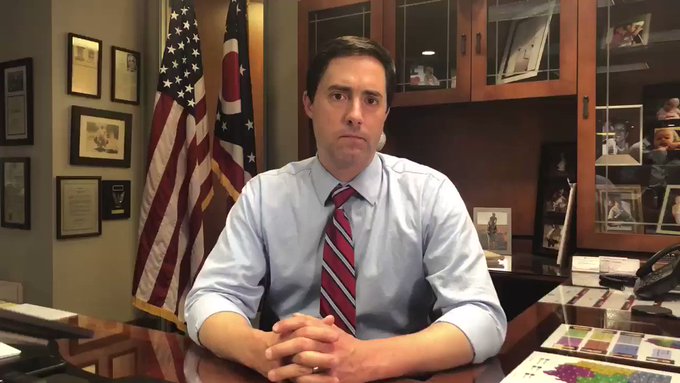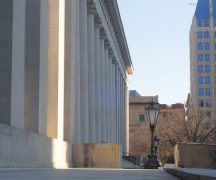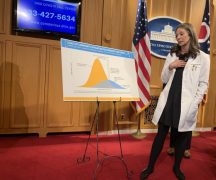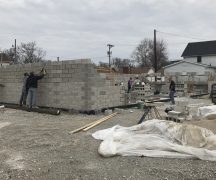Ohio’s lengthy, unpredictable primary election finally concluded last week.
Now the fight is on to determine how the November general election will proceed.
That will be an election with a presidential race and other hot ticket items on the ballot, leading to a much larger turnout compared to the election held primarily through the mail over the past two months.
Voter rights groups want the planning process to begin now toward ensuring a safe, inclusive system in the fall. They don’t want a repeat of the primary election, which saw in-person voting postponed by the state’s top health official just 10 hours before polls were set to open.
While the state legislature did act to extend voting for a month, advocates had a tough time quickly educating voters on how to navigate the multi-step vote-by-mail process.
Complicating matters is the difficulty of predicting what the state’s coronavirus landscape will look like in six months’ time. Will it be safe for Ohioans to vote in person by then? If not, what will the parameters for absentee voting look like?
Whatever is decided, advocates hope that Secretary of State Frank LaRose and legislative leaders will start planning well in advance to give citizens enough time to prepare.
The indication is that planning is already underway.
Primary problems
The initial returns on “election night” last week showed more than 1.7 million votes were cast in Ohio’s primary election. That number includes people who early voted in-person prior to the election postponement on March 16, as well as all who voted by mail in the ensuing weeks.
The total is likely to go up slightly higher, as ballots postmarked in time are still being counted if received by May 8. Turnout may have also suffered by the lack of a contested presidential primary in either party.
“Ohio, we rose to the occasion,” LaRose said on election night. “We came together even in the midst of this global pandemic to make sure we could run a free and fair election.”Frank LaRose✔@FrankLaRose
This unprecedented primary election has concluded.
Ohioans can take pride in how we all rose to the occasion to overcome great adversity and run a safe, fair and accurate election. #VoteOhio#InThisTogetherOhio

20Twitter Ads info and privacy16 people are talking about this
Lt. Gov. Jon Husted, a former secretary of state himself, was asked about the primary election during Monday’s COVID-19 press conference. Husted said he speaks with LaRose often and there is already consideration about this coming November.
“(LaRose) is thinking about what the process should look like,” Husted said. “I would say that the mail-in ballot process for the primary worked as well as you could expect something to do that you were really creating on the run.”
Along the way, there were moments of confusion. Poll workers were largely kept in the dark the day before the election when its status was in doubt.
Following that, LaRose issued a directive to boards of elections dictating a June 2 voting day, despite not having any legal authority to do so. His directive was later rescinded when legislators, who do have the authority, approved the vote-by-mail process. It took days for some county boards of elections to fix their websites, which wrongly promoted the June 2 process due to LaRose’s directive.
The uncertainty had lasting consequences. Jen Miller, executive director of the League of Women Voters of Ohio, told reporters on Election Day (April 28) that her office was still hearing from Ohioans who thought the election was being held June 2.
“This primary could not be any more confusing or frustrating,” Miller said.
There is also the matter of provisional voting. In-person voting was only allowed for the primary election under certain circumstances — those with disabilities and those without access to the postal system.
Federal law requires boards of elections to give would-be voters a provisional ballot if so requested. The eligibility of those votes is a separate question, however. LaRose has directed the boards to toss out most of those provisional ballots. (Certain voters may have their provisionals counted if it can be proved they didn’t receive their absentee ballot in time due to postal delays.)
There are more than 44,000 outstanding provisional ballots, the Secretary of State’s Office reports. It is unclear how many of those will be counted. In a statement issued Monday afternoon, several Democratic lawmakers expressed their disappointment in LaRose’s order. Several lawmakers also publicized a letter Tuesday they had sent to LaRose asking further questions about the provisional ballots.

Sweeney, D-Cleveland
“I am beyond disappointed that Ohio’s chief elections officer is ordering counties not to count votes,” said Rep. Bride Rose Sweeney, D-Cleveland, “and, to make matters worse, this order was withheld until after the voting was finally over. This is no way to run things and this is another blow to voters’ confidence in our elections.
“Our team will continue working toward the best policies to protect voters from the virus and ensure access to their vote,” the representative added.
LaRose didn’t speak to that issue in his election night address, but did say his goal was to encourage democracy despite the challenges associated with the pandemic.
“In our democracy, every voice matters and every vote will be counted,” he said, concluding: “now let’s move on to get ready for the November election.”
House Speaker Larry Householder told the Columbus Dispatch his chamber would be preparing a “back-up plan” should the virus impede voting efforts again this fall. The newspaper quoted Senate President Larry Obhof as saying it is too early to “speculate” about such a plan.
***
Also from Ohio Capital Journal:
Coronavirus masks: the Ohio legislature’s new partisan divide
Votes and face coverings alike fell along party lines Wednesday.
With few exceptions, Ohio’s Republican lawmakers flouted federal guidelines recommending everyone wear masks in congregate settings. Democrats heeded them.
Barefaced, Speaker of the House Larry Householder, R-Glenford, said he didn’t even own a mask.
“It’s just a personal matter for people,” he said to a gaggle of masked reporters. “Some are comfortable with it and some aren’t.” READ MORE
Ohio jobless claims over last seven weeks more than the past three years combined
Ohio has seen more jobless claims filed over the last seven weeks than for the last three years combined, according to a release from the Ohio Department of Job and Family Services (ODJFS) Thursday.
The department reported 61,083 initial jobless claims this past week to the U.S. Department of Labor, a news release said.
The number of initial jobless claims filed in Ohio over the last seven weeks (1,118,569) is 1,112 more than the combined total of 1,117,457 for the last three years, it added. READ MORE





